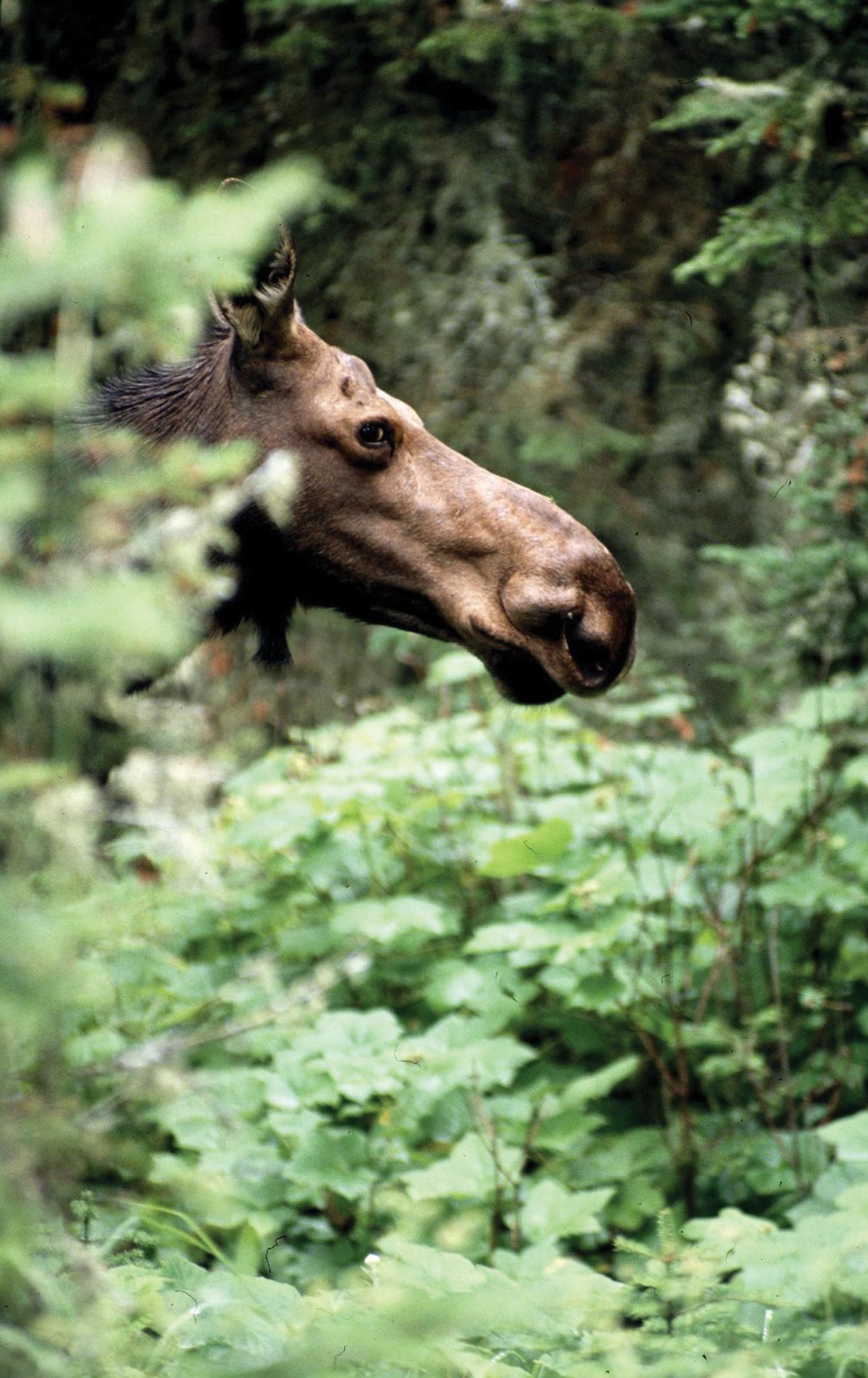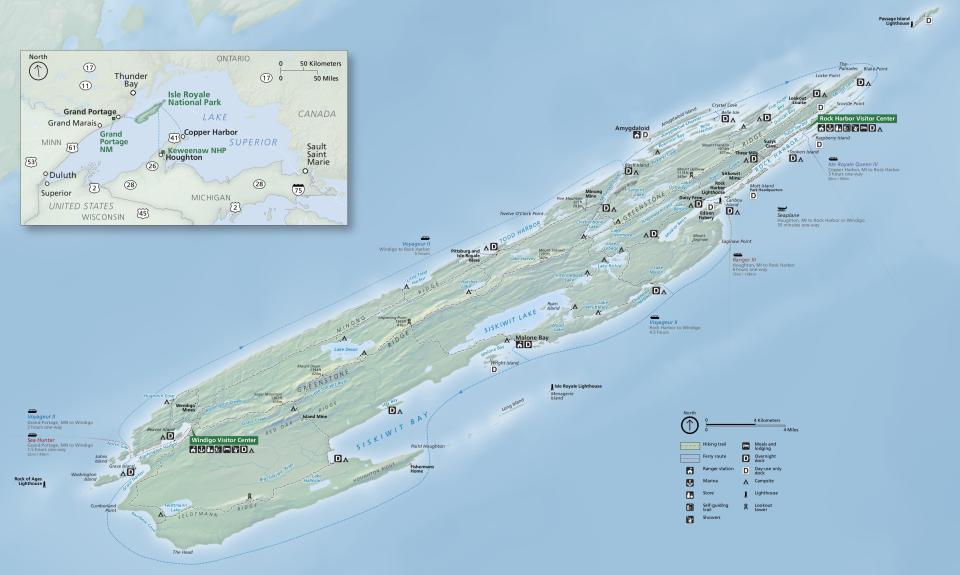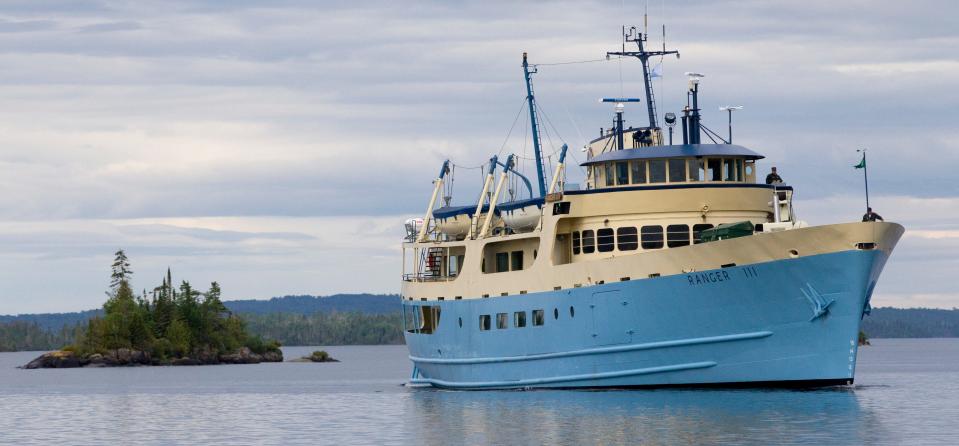Isle Royale National Park prepares for 2023 season

“It’s official! The park’s opening crew has headed out for the 2023 season.”
That was the opening line across Isle Royale National Park’s social media accounts on April 25, followed by an enthusiastic announcement heralding the 2023 season. For the National Park that proudly bears the title of “Most Re-Visited Park on the Roster,” it’s safe to say the excitement of the National Park Service rangers and island staff is shared by the thousands of hardy souls eagerly anticipating their 2023 adventure to the island.
During late spring and early summer, park staff, rangers and volunteers work hard to get utilities online, repair and ready structures, clear downed trees and improve trail accessibility. Passenger service to the island via ferries and seaplanes begins in mid-May and ends in September.
Given that “Expect the Unexpected” is the supreme mantra voiced by all who have worked and recreated on the island, Liz Valencia, manager of interpretation and cultural resources for the park, spoke with the Sault News to share her thoughts, advice, travel tips and things to be aware of on the island this year.
“The unpredictability of Lake Superior dictates everything that happens on and around the island,” Valencia said. “Travel schedules and carefully planned itineraries may change and there’s nothing you or we can do about it. When you’re on Isle Royale, you’re at the mercy of the lake and the island.”
And it’s not just Valencia saying that. A quick look at the dedicated National Park Service website for Isle Royale reveals an assortment of visitor preparedness packets, FAQs, maps, permit data, travel information and a useful “Trip Ideas” guide to help visitors plan their trip based on their timeline and interests.
“Bring extra food, pack for cold weather and rain no matter the month, and arrange your schedules so if you happen to get ‘stuck’ on the island an extra day or two, your loved ones back home won’t worry,” said Valencia. She referenced a First Timer's guide on the National Park Service (NPS) website, which helps newcomers prepare for a trip to the most remote national park in the Lower 48.
Because Isle Royale National Park is not a “drive-in” park like the big ones out west, “Plan Ahead and Be Ready for Change” are the words of wisdom that govern visitor preparedness. The only way to get to the island is by boat or seaplane, so folks are encouraged to study the island and plan, plan, plan, and not just “show up and wing it.”
“Unlike many parks, every visitor who arrives at the island receives a face-to-face orientation from an NPS ranger who coaches them on how to enjoy the island safely and ethically,” Valencia said. “That helps us ensure visitors have the information they need to enjoy their stay.”
More: 2 Upper Peninsula lighthouses slated for restoration program
Subscribe: Get unlimited access to our coverage
Folks should also remember that the island is a little over 200 square miles, the vast majority undeveloped. Those who are used to visiting developed National Parks with state-of-the-art service facilities should anticipate something very different on Isle Royale. They should plan to do without the usual comforts and conveniences of modern living.
Visitors should also remember that those features — the lack of infrastructure, the low human impact, the sparse service facilities and the island’s wild, untamed nature — are what make Isle Royale so incredible.
“The immersion is the draw,” Valencia said. “There is no single, iconic ‘Aha!’ spot in the park that everyone talks about. It’s more of an immersive experience. And while we believe it’s that immersion in nature that makes Isle Royale the most re-visited park on the roster, coming here does require a decent bit of planning to ensure you have a good time.”

As Valencia noted, there’s no “No #1 Attraction” on Isle Royale that everyone thinks about when they picture or remember the island. But some places that folks tend to remember fondly include Lookout Louise, Lane Cove, Scoville Point, the Rock Island Lighthouse, the Greenstone Ridge, Siskiwit Lake, Suzy’s Cave, the Feldtmann Ridge Lookout Tower and the Minong Mine.
When asked about challenges the park faces, Valencia remarked that providing a superb visitor experience is the most pressing concern for National Park Service rangers. Though Isle Royale's 24,000 to 28,000 annual visitors is a small figure compared to visitation in other National Parks (Yellowstone National Park gets that many visitors in a day), that’s still a decent number of humans visiting an island in the relatively short window of May through October.

“We’re noticing that more campers are having to share campsites,” Valencia said when asked about challenges facing the park. “But we can fix that by adding more sites and improving access to them.”
Ensuring a pleasant visitor experience may be the #1 focus for 2023, but it is by no means the most pressing long-term concern.
“As the climate warms, habitats and species on the island are changing,” Valencia said. “Certain types of fish can’t survive in the island’s inland lakes anymore, which affects the island’s biodiversity and other species that live on the island. We’ve also noticed an uptick in algae blooms occurring in the inland lakes, which makes it tricky for campers who are relying on those lakes for water.”
The National Park Service has launched numerous research projects to understand the changing island. Visitors in 2023 should still plan for a memorable experience, but for those returning after many years away, Isle Royale today might look different than it did years ago. That’s why the primary function of the rangers and custodians who live and work on the island is to preserve it and ensure visitors can enjoy its natural beauty for generations to come.
Ren Brabenec is a Brimley-based freelance writer and journalist with The Sault News. He reports on politics, local issues, environmental stories, and the economy. For questions, comments, or to suggest a story, email hello@renbrabenec.com.
This article originally appeared on The Sault News: Isle Royale National Park prepares for 2023 season

